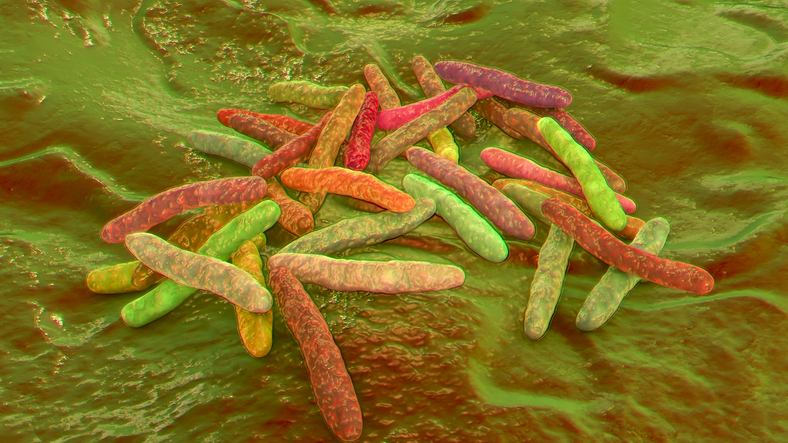An international research team headed by scientists at the University of British Columbia has demonstrated how a novel semi-synthetic compound derived from sanguinarine (SG), an alkaloid extracted from the flowering plant Sanguinaria canadensis, demonstrates potent activity against Mycobacterium tuberculosis (Mtb), the pathogen that causes tuberculosis (TB), including multi-drug resistant (MDR) clinical isolates. The compound, designated BPD-9 was inactive against a range of other Gram-negative and Gram-positive bacteria, suggesting narrow spectrum activity against Mycobacterium species. Preclinical in vivo studies showed that BPD-9 also demonstrated antibacterial activity against M. bovis BCG in infected mice. The researchers say the new compound structure could represent a promising chemical scaffold for developing potent new anti-tuberculosis drugs.
“Our findings show a new chemical entity that has unique properties in combating Mycobacterium tuberculosis, which may be harnessed further for clinical translation,” said Jim Sun, PhD, assistant professor in the department of microbiology and immunology at the University of British Columbia. Sun is corresponding author of the team’s published paper in Microbiology Spectrum, titled, “Discovery of benzo[c]phenanthridine derivatives with potent activity against multidrug-resistant Mycobacterium tuberculosis,” in which the team concluded: “The unique specificity of BPDs to Mycobacterium spp. and their efficacy against MDR Mtb isolates suggest a potential novel mechanism of action. The discovery of BPDs provides novel chemical scaffolds for anti-TB drug discovery.”
M. tuberculosis is the leading cause of bacterial disease-related death worldwide, the authors wrote. However, current antibiotic regimens for the treatment of TB are dated, require longer courses of treatment, and risk the development of drug resistance. “There remains an urgent need to discover new antibiotics with unique mechanisms of action that are effective against drug-resistant Mycobacterium tuberculosis (Mtb),” the team stated.
For their new study, the researchers conducted a search for novel antibiotics targeting M. tuberculosis that could be effective against drug-resistant strains. In drug discovery, a valuable place to start looking for new antibiotics is within the world of natural compounds. “To find new mechanisms of action and new chemical scaffolds, natural products possess a range of benefits for drug discovery,” the investigators pointed out. “Natural products are ideal candidates for drug discovery due to their unique structural and scaffold diversity.”
The team focused on sanguinarine, a natural benzo[c]phenanthridine alkaloid compound with known antimicrobial properties, which is extracted from an herbaceous flowering plant native to North America. Sanguinarine has been used in traditional and alternative medicine for animals, but its toxicity makes it unfit to be used as a drug in humans. Sanguinarine has shown antibacterial effects against various Gram-positive and Gram-negative bacteria, they pointed out, “However, the antibacterial effects of SG against mycobacteria have not been explored and may represent a missed opportunity.”
Sun and colleagues redesigned sanguinarine using principles of medicinal chemistry to produce a more potent antibacterial compound with reduced toxicity. “… we designed and synthesized 35 unique derivatives of SG,” they explained. “Phenotypic activity screening identified five hits within this group of new compounds that possessed significantly improved anti-Mtb activity compared to SG.”
The two most potent compounds, BPD-6 and BPD-9, demonstrated low-micromolar inhibitory activity against multiple mycobacterial species. In studies in test tubes and in mice BPD-9 was capable of killing strains of M. tuberculosis that are resistant to all front-line antibiotics used in the clinic to treat TB. “Importantly, BPD-9 was active against multiple multidrug resistant (MDR) Mtb clinical isolates, and showed in vivo anti-mycobacterial activity against M. bovis BCG in infected mice,” the investigators wrote. Moreover, BPD-9 was effective against non-replicating (dormant) and intracellular M. tuberculosis, which are two key aspects that limit the effectiveness of current anti-TB drugs. “We provide biological evidence that these compounds inhibit metabolically inactive non-replicating Mtb, intracellular Mtb, and multiple clinical MDR-TB strains in the low micromolar range,” they added.
The researchers also found that BPD-9 was only active against pathogenic bacteria from the same genus as M. tuberculosis, which may spare the microbiome and other beneficial bacteria that most antibiotics harm.
Sun concluded, “Our finding that the new compound is effective against other members of the Mycobacterium genus may also prove to be valuable in the fight against deadly lung infections caused by non-tuberculous mycobacteria, which are notoriously resistant to most antibiotics. It is also enticing to speculate that BPD-9 could be killing Mycobacterium tuberculosis in a way that is different than that of existing anti-TB drugs.” In their paper, the authors stated, “The selective ability to inhibit multiple species of Mycobacterium also supports a target that is unique to this genus … The potency, specificity, and cytotoxicity are all superior relative to sanguinarine, and suggests a unique mode of action that is distinct from all front-line TB antibiotics …”.


